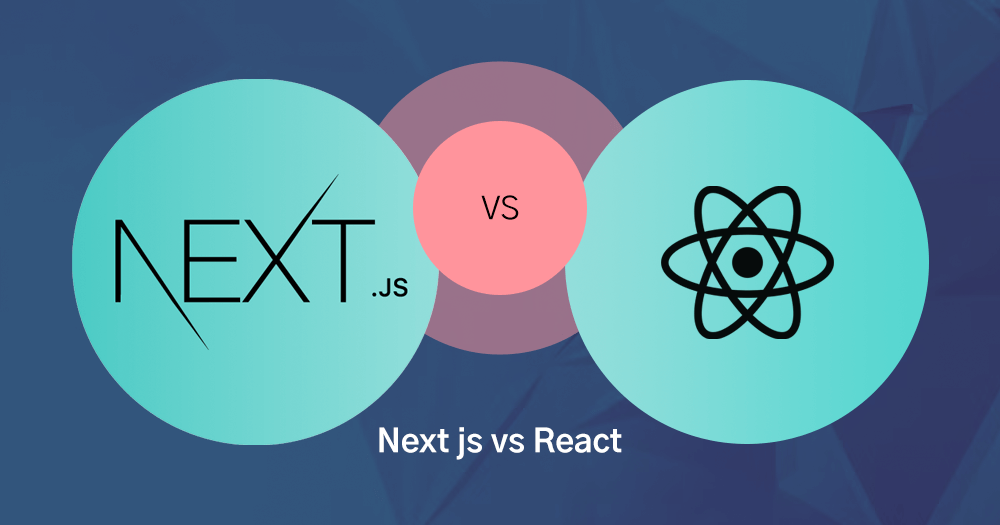Next.js vs. React: Unraveling the Differences and Choosing the Right Framework
React has revolutionized front-end web development, empowering developers to create dynamic and interactive user interfaces. However, as applications become more complex, developers often turn to frameworks like Next.js to handle additional challenges such as server-side rendering, routing, and code splitting. In this blog post, we’ll compare Next.js and React, exploring their key differences, use cases, and benefits, to help you make an informed decision when choosing the right framework for your project.
React – The Powerful JavaScript Library
React, developed and maintained by Facebook, is a JavaScript library primarily used for building user interfaces. It follows a component-based architecture, breaking down UI elements into reusable and self-contained components. React employs a virtual DOM to efficiently update and render only the necessary parts of the interface, resulting in improved performance and responsiveness.
React’s simplicity and flexibility make it a popular choice for projects of all sizes. Its vast ecosystem of libraries and tools, such as Redux for state management and React Router for routing, allows developers to tailor their development stack to meet specific project needs. React is ideal for projects where the focus is solely on building user interfaces, and the developer prefers more control over the overall architecture.
Embracing the Future: The Best CSS Frameworks for React in 2023
Next.js – The Full-Featured React Framework
Next.js, developed by Vercel, is a powerful framework built on top of React. It extends React’s capabilities by offering built-in features like server-side rendering (SSR), static site generation (SSG), automatic code splitting, and a file-based routing system. These features enable developers to build performant and SEO-friendly applications with ease.
The key advantage of Next.js is its ability to render pages on the server, delivering HTML content to the client instead of just JavaScript. This dramatically improves initial load times, enhances SEO, and ensures the application works without JavaScript enabled on the client-side. Furthermore, Next.js supports both SSR and SSG, allowing developers to choose the rendering method that best suits their project.
Next.js also simplifies the routing process by automatically generating routes based on the file structure. This file-based routing system enhances developer productivity and keeps the codebase organized.
Use Cases and Benefits
- React Use Cases:
- Building user interfaces for web applications and single-page applications (SPAs).
- Developing component-based UIs that encourage reusability and modularity.
- Crafting interactive front-end elements in a wide range of projects.
- Next.js Use Cases:
- Creating server-rendered applications for improved SEO and performance.
- Building static websites or blogs with the advantage of server-side rendering.
- Handling complex routing needs while maintaining a simple file structure.
- Rapidly prototyping projects with built-in features.
Choosing the Right Framework
Choose React If:
- You need a lightweight library for building UI components in your project.
- You want full control over the architecture and are willing to set up server-side rendering and routing manually.
- Your project has minimal SEO requirements, and client-side rendering meets your performance needs.
Choose Next.js If:
- You require server-side rendering or static site generation for improved performance and SEO.
- Your project demands complex routing, and you prefer a file-based routing system.
- You want a framework that comes with built-in features, reducing the need for additional setup and configuration.
React and Next.js are both powerful tools that cater to different needs in the world of web development. React excels as a lightweight library for building UI components, while Next.js is a full-featured framework offering built-in server-side rendering, static site generation, and routing.
Consider your project requirements, performance needs, and SEO considerations when choosing between React and Next.js. React is perfect for lightweight and flexible UI development, while Next.js is a go-to solution for building performant and SEO-friendly applications with enhanced routing capabilities. Whichever framework you choose, both React and Next.js continue to be at the forefront of web development, enabling developers to craft remarkable user experiences on the web.

